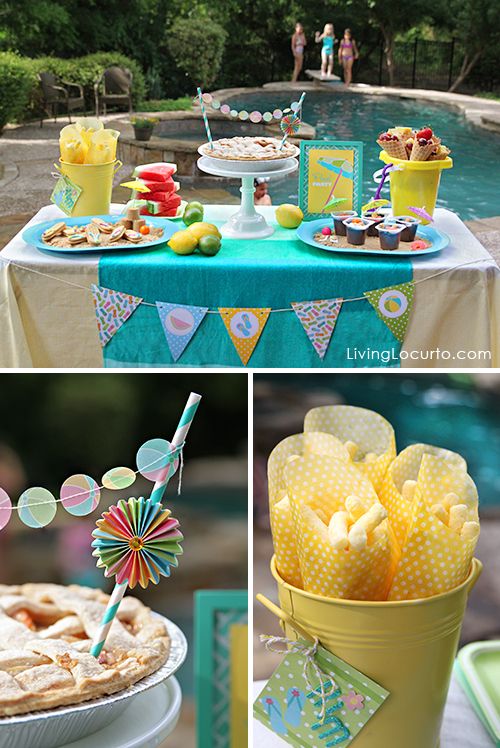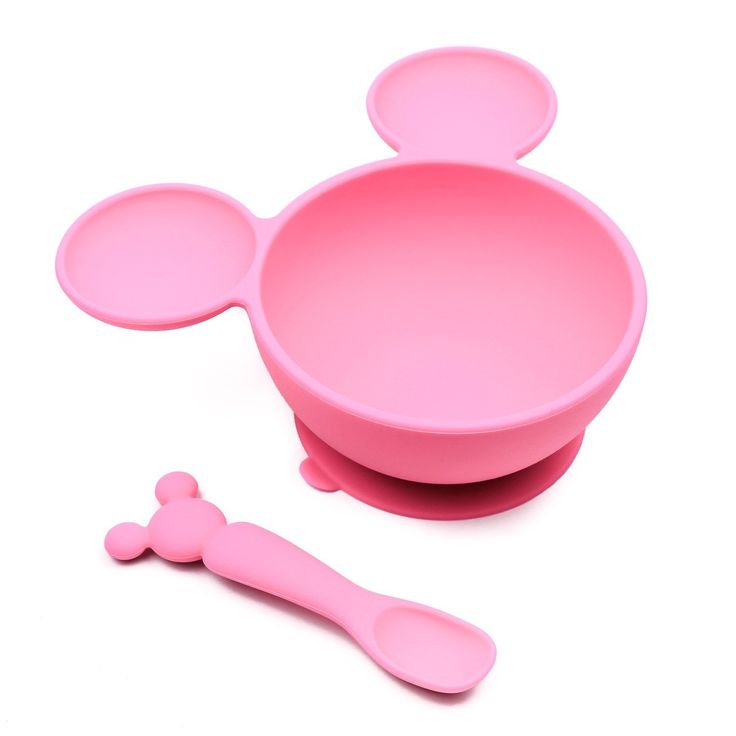Baby foods to try
When to Start Baby Food
Starting solids is an exciting and important milestone in baby’s development—one that not only opens them up to a brand-new world of flavors and textures, but also puts them on the right path to growing healthy and strong. Here’s what you need to know about how and when to start baby food for a smooth transition.
In this article:
When to start baby food
How to start baby on solids
Best first foods for baby
Introducing allergenic foods
When to Start Baby Food
Knowing when to start baby food is both crucial and tricky. Starting baby on solids too early means you might increase the risk of choking, obesity and bellyaches, but introducing solids too late means you might slow baby’s growth and encourage an aversion to solid foods, among other conditions. Fortunately, doctors have zeroed in on a sweet spot for starting baby food, which is sometime between 4 and 6 months of age—though, ideally, baby should be receiving their nutrition exclusively from breast milk until the six-month mark, according to the American Academy of Pediatrics (AAP). How to tell if it’s time for starting solids for your little one? Baby will give you clues, including:
• Baby can sit in a high chair comfortably on their own. This is a major sign in terms of when to start baby food, says Lauren Kupersmith, MD, a pediatrician at Hassenfeld Children’s Hospital at NYU Langone in New York City. It means baby can hold their head up and doesn’t need to be propped up to stay in the upright position, which is important to avoid choking.
• Baby looks interested at mealtime. Babies likes to mimic what we do, so if your child likes to sit up like a big kid and watch you eat, then by all means let them try eating too.
• Baby can move food to the back of their throat to swallow. But if baby tends to push the food out of their mouth—not because they don’t like it, but because they can’t seem to get the food to where it needs to go—hold off on starting solids.
How to Start Baby on Solids
At 4 to 6 months, most of baby’s nutrition will still come from breast milk or formula, so don’t worry if baby doesn’t like eating food right away.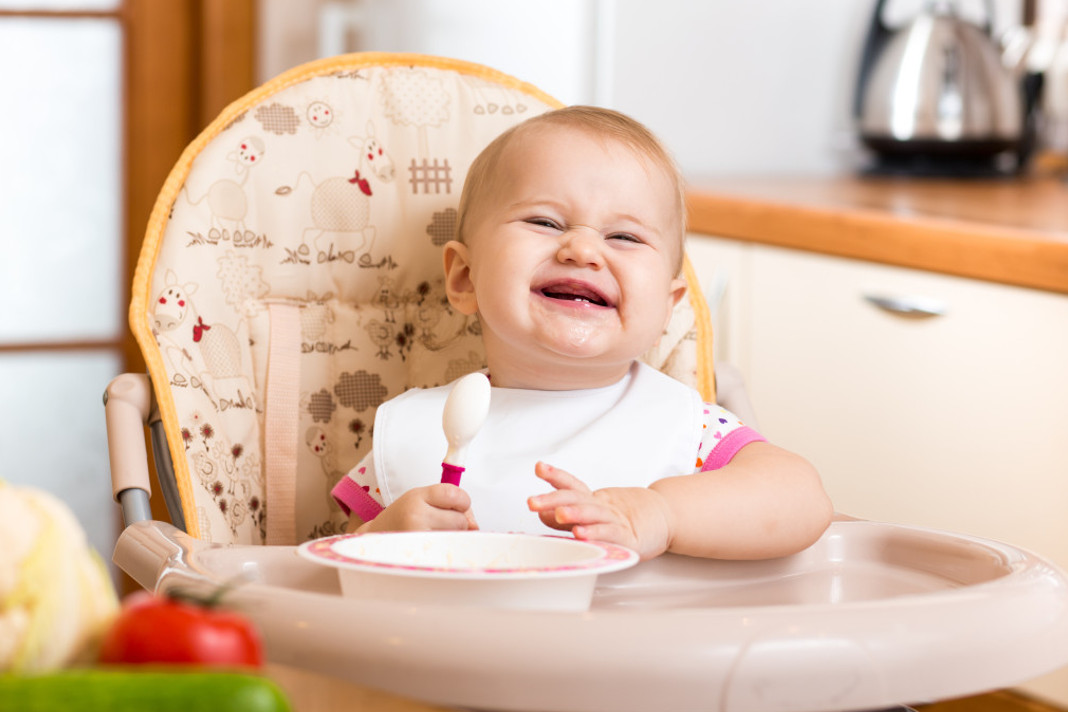 Introducing solids is a gradual process, and every baby learns in their own time. Here are some general guidelines for how to start baby on solids:
Introducing solids is a gradual process, and every baby learns in their own time. Here are some general guidelines for how to start baby on solids:
• Feed baby with a spoon. Letting your child go at it with their hands may seem tempting (and super-cute), but it’s best that they learn the right way from the get-go. (And even then, be prepared to clean up more than a few messes!) Also, never put cereal (or any other food) in baby’s bottle—it’s a choking hazard.
• Start slowly. When introducing solids, a half spoonful will do at first—you may even want to talk baby through it (“Yummy!”). To make it easier for baby to get accustomed to the idea of swallowing solids, start mealtime with a little breast milk or formula, then offer some food (again, no more than a half teaspoon at a time) and finish off with more breast milk or formula. If baby cries or turns away when you present the spoon, try again some other time. Start off with introducing solids at one meal a day, then slowly work your way up. The morning is a good place to start, since baby is often hungriest at that time. When starting solids, baby typically won’t eat more than an ounce or two in one sitting.
The morning is a good place to start, since baby is often hungriest at that time. When starting solids, baby typically won’t eat more than an ounce or two in one sitting.
• Try new foods more than once. Since babies’ tastes will evolve, you may need to try a food 20 times before a baby actually likes it, says Kupersmith.
• Stick with the same food for three days before trying another one. This makes it easy to track whether baby is allergic to a particular food.
• Try foods in different forms. If baby doesn’t like pureed food, try it mashed. After all, baby is learning about new textures as well as new tastes. It may be a case of trial and error until you find a winner.
Best First Foods for Baby
Got baby safely strapped into the high chair and bib? You’re ready to finally start feeding baby solids! There aren’t any official food rules for babies starting solids, and there’s no scientific evidence suggesting you should introduce one type of food before another, assuming the foods aren’t choking hazards.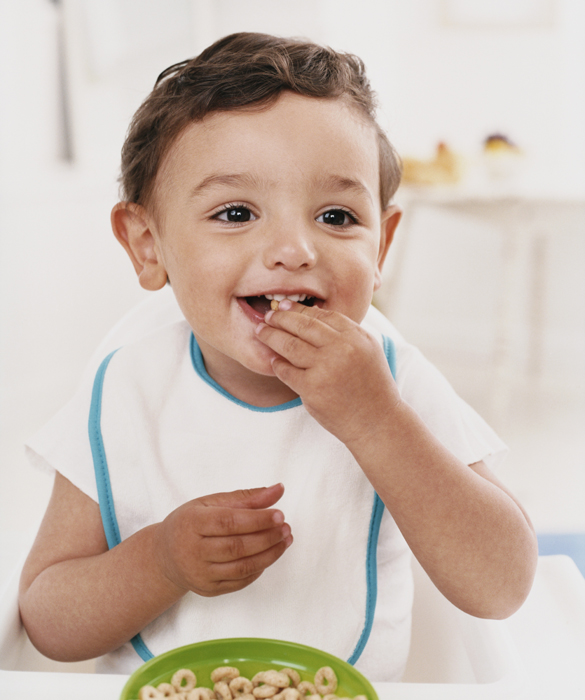 Nevertheless, baby cereal (such as oatmeal, rice and barley) is an “easy training food,” says Kupersmith, which is why it’s often recommended as baby’s first food; you can always mix it with more milk to build up to a thicker consistency. Many doctors also recommend starting vegetables before fruits, but there’s no evidence that this would make babies like vegetables more when they grow up—babies innately love sweets, and the order of introducing solids to baby doesn’t change that.
Nevertheless, baby cereal (such as oatmeal, rice and barley) is an “easy training food,” says Kupersmith, which is why it’s often recommended as baby’s first food; you can always mix it with more milk to build up to a thicker consistency. Many doctors also recommend starting vegetables before fruits, but there’s no evidence that this would make babies like vegetables more when they grow up—babies innately love sweets, and the order of introducing solids to baby doesn’t change that.
So why not simply start introducing solids with something you think baby will like? Here are a few common first foods for baby that are healthy and easy to eat (and, in the case sweet potato and banana, also easy to digest). Whatever you decide to feed baby, mash it with a fork or puree before serving whenever introducing solids.
- Baby cereal, such as oatmeal, rice, barley
- Sweet potato
- Banana
- Avocado
- Apples
- Pears
- Green beans
- Butternut squash
If your child has been breastfeeding, check with your pediatrician about getting a jump on pureed chicken or beef when you’re starting solids. These foods contain easily absorbable forms of iron and zinc, which baby needs by 4 to 6 months, according to the AAP.
These foods contain easily absorbable forms of iron and zinc, which baby needs by 4 to 6 months, according to the AAP.
At around 9 months, baby should have already worked their way up to a variety of foods, including cereal, vegetables, fruits, meats, eggs and fish (see below regarding the last two). (Keep in mind, though, that baby will still get the majority of their nutrients from breast milk or formula until age one.) By now, baby will probably settle on three meals a day along with two snacks. Let them consume about 4 ounces of solids at each meal (equivalent to a small jar of strained baby food) and about half that amount for each snack.
Save honey and cow’s milk for after baby’s first birthday—there’s a risk for infant botulism with honey (a type of bacterial poisoning), and baby’s tummy isn’t prepared to digest large amounts of cow’s milk until they’re about one year old. Avoid adult processed foods and foods that are choking hazards (such as sticky foods, like large gobs of peanut butter; hard foods that are difficult to gum, like raw vegetables, nuts, seeds and popcorn; and round, slippery foods that haven’t been cut up, like grapes and cherry tomatoes). Instead, the first foods for baby, and those in the months that follow, should be soft and served mashed, pureed or (once baby seems ready to move up from the really mushy stuff) cut up into really little bits. “There’s pretty much free reign at that point,” Kupersmith says.
Instead, the first foods for baby, and those in the months that follow, should be soft and served mashed, pureed or (once baby seems ready to move up from the really mushy stuff) cut up into really little bits. “There’s pretty much free reign at that point,” Kupersmith says.
Introducing Solids Chart
Hesitant about improvising your first foods for baby? That’s okay too. If you prefer an “introducing solids chart” to help you plan out baby’s path, the guide below can come in handy.
Image: The Bump
Introducing Allergenic Foods
Much of the confusion around when to start baby food stems from questions concerning allergenic foods. These are foods that babies are most often allergic to. The major culprits include dairy, eggs, fish, peanuts and tree nuts. In the past, parents were advised to hold off on exposing baby to these foods, but now doctors recommend introducing them early, often and in age-appropriate format, which means starting off with purees and soft textures.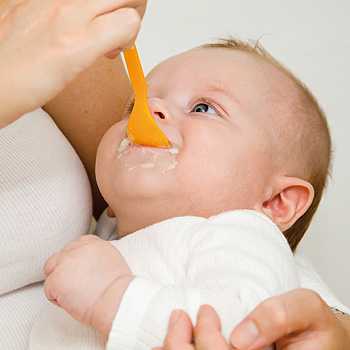
“Dairy is an easy starting point, given options such as yogurt and cheese,” says David Stukus, MD, director of the Food Allergy Treatment Center at Nationwide Children’s Hospital and a spokesperson for the American College of Allergy, Asthma, & Immunology. You can also try scrambled eggs in small amounts, although baby may not be too pleased with the texture at first.
As far as peanut products go, the National Institutes of Health issued new guidelines in 2017 that encourage parents of children at high risk for peanut allergies to incorporate them into baby’s diet at 4 to 6 months of age. Giving these babies peanut products before the age of one actually decreases their risk of developing a peanut allergy before age 5 by 81 percent, compared to kids who are introduced to peanuts later in life. Parents of kids without the food allergy risk can start peanut products whenever they’d like, as long as the nuts are in an age-appropriate form: Peanut butter can be thinned out with water or mixed into a fruit or vegetable puree, and peanut powder can also be mixed into cereal and fruits. Don’t give whole peanuts or pieces of peanuts, since they’re a choking risk.
Don’t give whole peanuts or pieces of peanuts, since they’re a choking risk.
Allergic reactions to food are never just a fluke; they will happen with every exposure. Symptoms can range from mild (such as a rash or vomiting) to severe (such as trouble breathing). If baby has a food allergy, you’ll notice a reaction within minutes or up to two hours after eating the problematic food, Stukus says. If the symptoms are severe, call 911 right away. Otherwise, talk to your pediatrician; she can help confirm whether it’s an allergy or some other type of condition (such as a viral illness).
Expert bios:*
Lauren Kupersmith, MD, IBCLC, is a pediatrician and clinical instructor at Hassenfeld Children’s Hospital at NYU Langone in New York City, as well as a certified lactation consultant. She earned her medical degree from New York Medical College in 2005.
David Stukus, MD, is the director of the Food Allergy Treatment Center at Nationwide Children’s Hospital, an associate professor of pediatrics in the division of allergy and immunology and a spokesperson for the American College of Allergy, Asthma, & Immunology. He earned his medical degree from University of Pittsburgh School of Medicine in 2002.
He earned his medical degree from University of Pittsburgh School of Medicine in 2002.
Updated January 2020
Please note: The Bump and the materials and information it contains are not intended to, and do not constitute, medical or other health advice or diagnosis and should not be used as such. You should always consult with a qualified physician or health professional about your specific circumstances.
Baby's first foods: The 10 best foods for babies
These 10 first foods are ideal for your baby because they're full of essential nutrients, reasonably priced, easy to prepare, and delicious. Avocados contain healthy fats, while bananas are loaded with potassium. Blueberries are bursting with antioxidants, whereas broccoli offers fiber and folate. Both lentils and meat are packed with protein. Prunes can help with constipation, and yogurt helps form healthy bones and teeth. Sweet potatoes and winter squash are great sources of beta-carotene and vitamin C.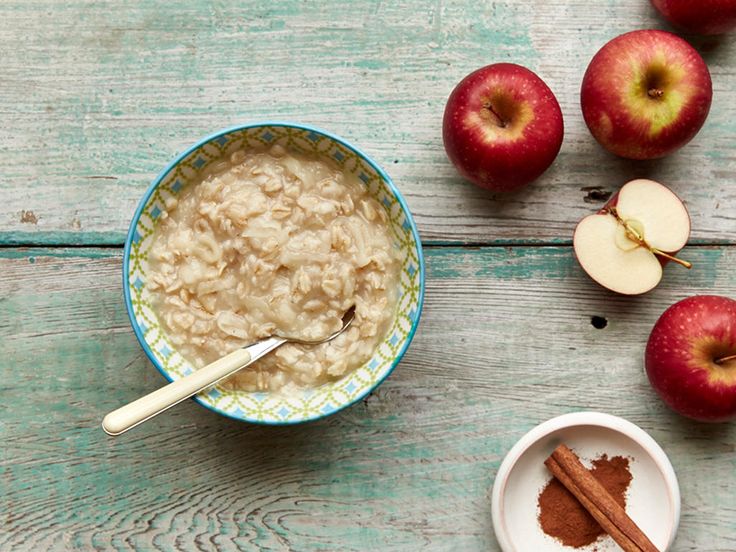
According to the American Academy of Pediatrics, it's important to offer your baby a variety of healthy foods. There are lots of healthy, baby-friendly foods out there, but these 10 recommended by doctors and dietitians alike stand out from the pack. From vitamin-rich fruits and veggies to meats and beans loaded with protein, these superfoods are full of essential nutrients, reasonably priced, easy to prepare, and delicious.
Many are also favorite first foods. Before introducing solids, talk to the doctor about your baby's readiness for solids, and which foods to introduce and when. Then introduce foods one at a time, waiting at least three days after each new food to watch for any allergic reaction.
Avocados
BabyCenter parents are all about avocado as a first food. This buttery fruit-vegetable is rich in healthy unsaturated fats that help boost brain development. In fact, the fat composition of avocados is somewhat similar to that of breast milk.
Serving ideas: Mash avocado with a fork, or make baby guacamole.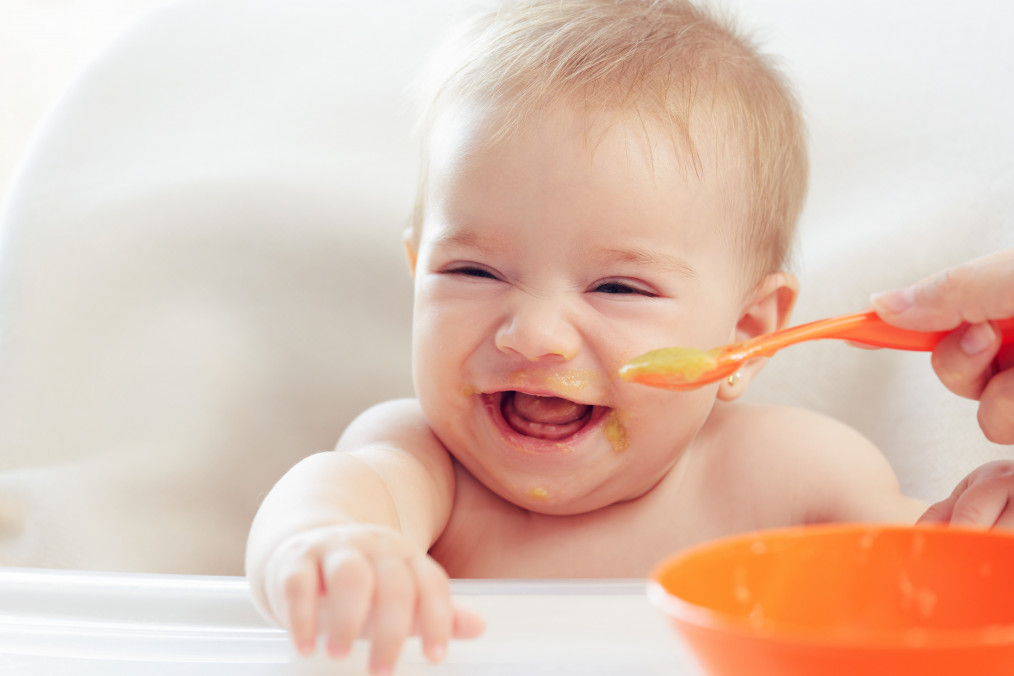
Bananas
Known as a good source of potassium, this grab-and-go fruit also contains vitamins B6 and C, fiber, and magnesium.
Serving ideas: Make banana and mango puree. Or, for your little one's first smoothie, puree banana and peach chunks with whole-milk yogurt.
Blueberries
Blueberries are bursting with antioxidants. The deep, brilliant blue of these berries comes from flavonoids that benefit your baby's eyes, brain, and even urinary tract.
Serving ideas: Blend or mash blueberries well and swirl a spoonful of the juicy purple puree into yogurt, or top silky coconut milk rice pudding with blueberry compote.
Broccoli
This cruciferous vegetable is a rich source of essential nutrients, including fiber, folate, and calcium. Introduce your baby to broccoli's bold flavor early, and you'll be expanding their tastes and encouraging a lifelong love of green vegetables.
Serving idea: Steam until soft, cut into pieces small enough for your child to eat safely, and then chill.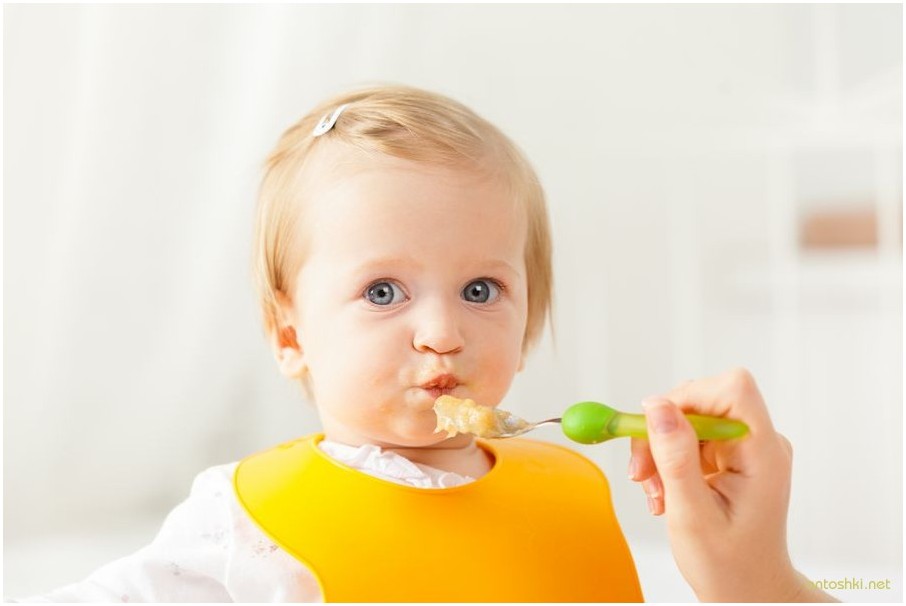 Steaming takes the bite out of broccoli, and some babies prefer the texture and taste when it's cold.
Steaming takes the bite out of broccoli, and some babies prefer the texture and taste when it's cold.
Lentils
Beans and other legumes pack lots of lean protein and fiber. But unlike larger beans, little lentils simmer into a pleasing mush just right for baby bites. They're also one of the cheapest healthy foods you can buy.
Serving ideas: Cook finely diced carrots along with the lentils. As your baby gets older, double up on nutrient-rich foods by making lentil and spinach stew.
Meat
Lack of iron can cause anemia. The American Academy of Pediatrics recommends meat as a first food because it's such a great source of protein, zinc, and iron, especially red meat and dark poultry meat. Plus, babies absorb iron more easily from meat than from iron-fortified cereals, another common first food.
Serving ideas: If your baby is new to solids, try our easy turkey or chicken puree recipe. As they get older, introduce new flavors with chicken curry with green beans and zucchini or shepherd's pie.
Prunes
Whether you call them "prunes" or "dried plums," these humble fruits don't sound glamorous – but they're soft, sweet, and full of fiber. Your baby may suffer from constipation when switching to solids, as it's a big change for their system. Add pureed prunes to your baby's diet to aid digestion and keep things moving.
Serving ideas: Serve pureed prunes alone or mixed with other foods, such as oatmeal, cereal, or applesauce, for a naturally sweet treat.
Sweet potatoes
Sweet potatoes are one of the more popular first foods for babies, who tend to like both their sweetness and texture. These colorful root vegetables are packed with beta-carotene, vitamin C, and minerals, including iron and copper.
Serving ideas: Serve sweet potato puree alone or swirled into pureed chicken or turkey.
Winter squash
Orange- or yellow-fleshed hard winter squashes such as butternut, acorn, and pumpkin boast many benefits, one of which is they're exceptionally rich in beta-carotene, recognized for being great for eyes.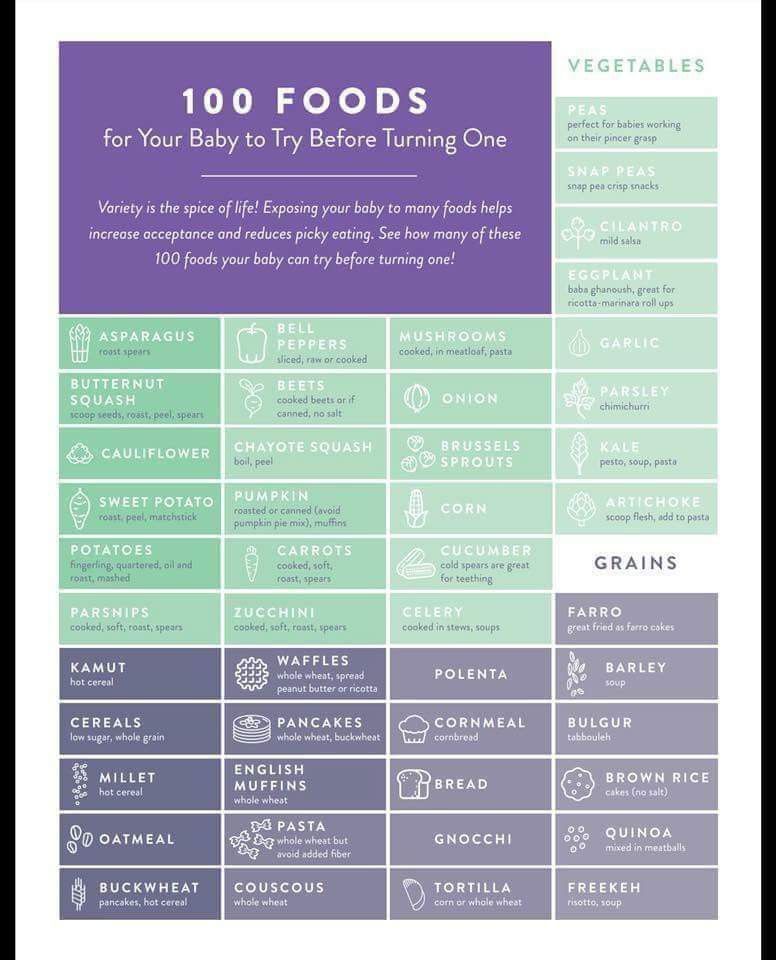 Squash is also an excellent source of vitamin C. Natural sweetness and a creamy texture add to the appeal of winter varieties.
Squash is also an excellent source of vitamin C. Natural sweetness and a creamy texture add to the appeal of winter varieties.
Serving ideas: Roast a winter squash like butternut, scoop out the flesh, and puree it for an easy first food. As your baby gets older, introduce new flavors and textures with dishes like smashed chickpea and butternut chili.
Yogurt
Creamy yogurt is rich in calcium and vitamin D, necessary for healthy bones and teeth. Your baby can have it at 4 to 6 months, long before they'll be ready for cow's milk.
Opt for plain yogurt with no added sugar. Also look for a brand with the most live cultures, which help regulate the good bacteria in your baby's digestive tract. Make sure you pick up whole-milk yogurt – babies need the calories from fat.
Serving ideas: Yogurt is fine on its own, or swirl in pureed berries or other fresh fruit, applesauce, or mashed avocado.
5 Nutritious Baby Food Recipes Every Parent Should Try
We include foods that we find helpful for our readers. If you buy from links on this page, we may earn a small commission. Here is our process.
If you buy from links on this page, we may earn a small commission. Here is our process.
Share on Pinterest
Spring has finally come. In addition, fresh fruits and vegetables are plentiful at the local farmers' market. While it's easy to grab all the great foods on your first trip of the season, food waste can be a real problem. Luckily, your leftover fruits and vegetables shouldn't fall off. Why not share your love of spring foods with your little one by making nutritious baby food at the farmer's market? it's the more nutritious of the many store-bought items, and it's a lot easier to make than you think!
“By making your own baby food, you can use fresh, healthy, natural ingredients and introduce your child to a wide range of healthy, delicious foods from an early age,” explains Dr. Sonali Ruder, author of Natural Baby Food. “Also, homemade baby food tastes better than store-bought baby food. It's more versatile and economical!"
Making baby food with fresh, home-grown fruits and vegetables from your farmer's market not only ensures you're giving your baby the most nutritious and nutritious ingredients, it also means you know exactly what you're feeding him.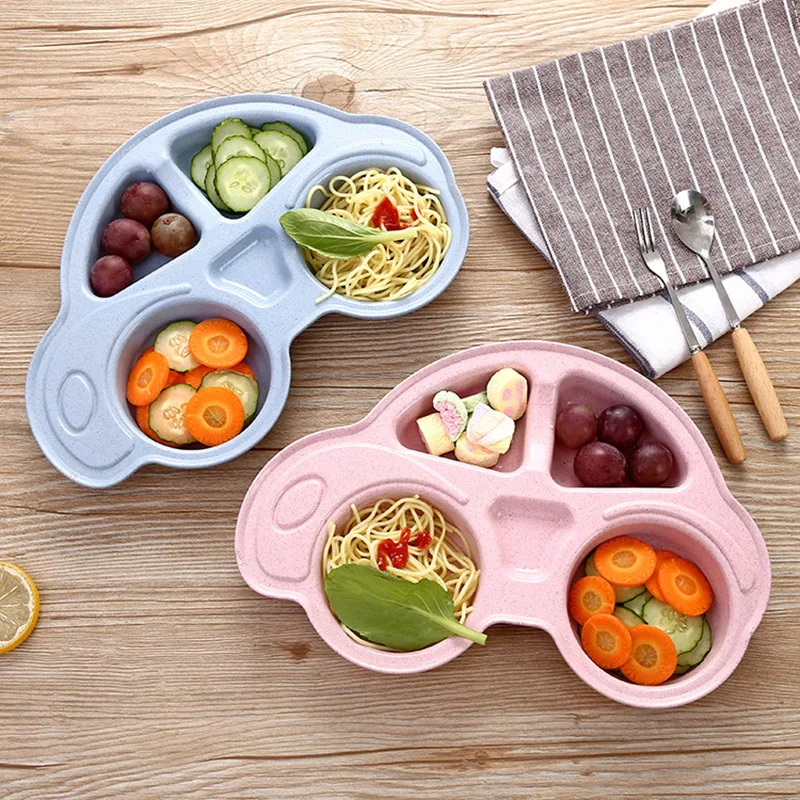 You have control that there are no added ingredients such as salt, sugar, or preservatives. Here's another flavor: You don't have to process homemade baby food at high temperatures to keep it stable on the shelves so you don't lose any of those valuable nutrients. And if you're wondering if you have time to add another task to your growing list, consider this: You can make homemade baby food while you're cooking your weekly meals.
You have control that there are no added ingredients such as salt, sugar, or preservatives. Here's another flavor: You don't have to process homemade baby food at high temperatures to keep it stable on the shelves so you don't lose any of those valuable nutrients. And if you're wondering if you have time to add another task to your growing list, consider this: You can make homemade baby food while you're cooking your weekly meals.
Katherine Doherty, health and nutrition blogger at Family Meals on the Table, says for those who feel intimidated, “You don't have to be a great cook or buy fancy equipment to make baby food yourself. Just start with the basics and basics and you'll see how easy it is!"
contents
How to start making complete homemade baby food
Before you start, here's a quick tutorial on preparing the product.
Wash fruits and vegetables well. This is a quick step and is especially important when preparing baby food. Thorough washing ensures that all pesticides and/or dirt are removed. The excellent condition of agricultural products is that they are fresh, which means that you need to be careful with cleaning them! Peel once, peel if necessary (e.g. with apples or mangoes).
The excellent condition of agricultural products is that they are fresh, which means that you need to be careful with cleaning them! Peel once, peel if necessary (e.g. with apples or mangoes).
Cook or sauté foods until they are soft. This will make the puree lighter while retaining all the nutrients. Cooking is not recommended as some of the ingredients will come out with the cooking water. You can skip this step if you have soft, ripe fruits like bananas or berries.
Send everything to the oven or blender. This is the fun part! You can also use an immersion blender to puree. Divide into individual BPA-free containers and store in the refrigerator for three days or in the freezer for several months. If you decide to freeze homemade baby food, be sure to store it in airtight BPA-free containers to prevent the freezer from burning out and avoid harmful chemicals.
How easy is it? In the beginning, you can start with simple one-ingredient foods like peas or carrots. If you want to experiment with other foods, you can jump right into these five easy homemade baby food recipes using delicious ingredients from your farmer's market!
If you want to experiment with other foods, you can jump right into these five easy homemade baby food recipes using delicious ingredients from your farmer's market!
Share on Pinterest
1. Puree made of green beans and avocado
End End: 15 minutes
Portion: 1 1/2 cup
Ingredients:
1 cup green beans, washed and cut
1 small avocados 1 small avocados 1 , peeled and pitted
2 tablespoons water
Extra: 1 garlic clove
Instructions:

Share on the Pinterest
2. Strawberry-breast puree
End End: 10 minutes
Portion: 1 cup
Ingredients:
1 cup of strawberries, purified
1 small pear, cleaned and chopped
Instructions: Instructions: Instructions:
Share on Pinterest
3. Green Pea and Asparagus Puree
Start End: 15 minutes
Portion: 2 cups
Ingredients:
1 cup green peas 3 9002
0002 2-3 tablespoons of waterInstructions:
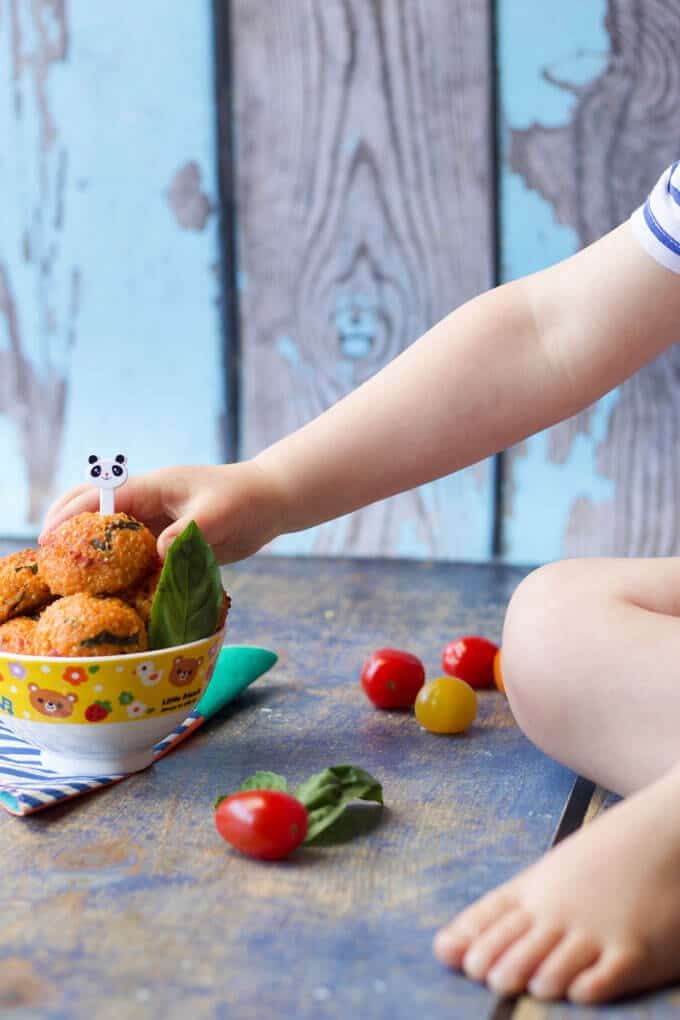 Cut into 1-2 cm pieces.
Cut into 1-2 cm pieces. Share on the Pinterest
4. Mango, carrots and sweet potatoes
End End: 1 hour
Portion: 3 cups
Ingredients:
1 Little sweet potatoes
1 cup of carrot
1 cup mango, peeled
1/4 cup water
Instructions:
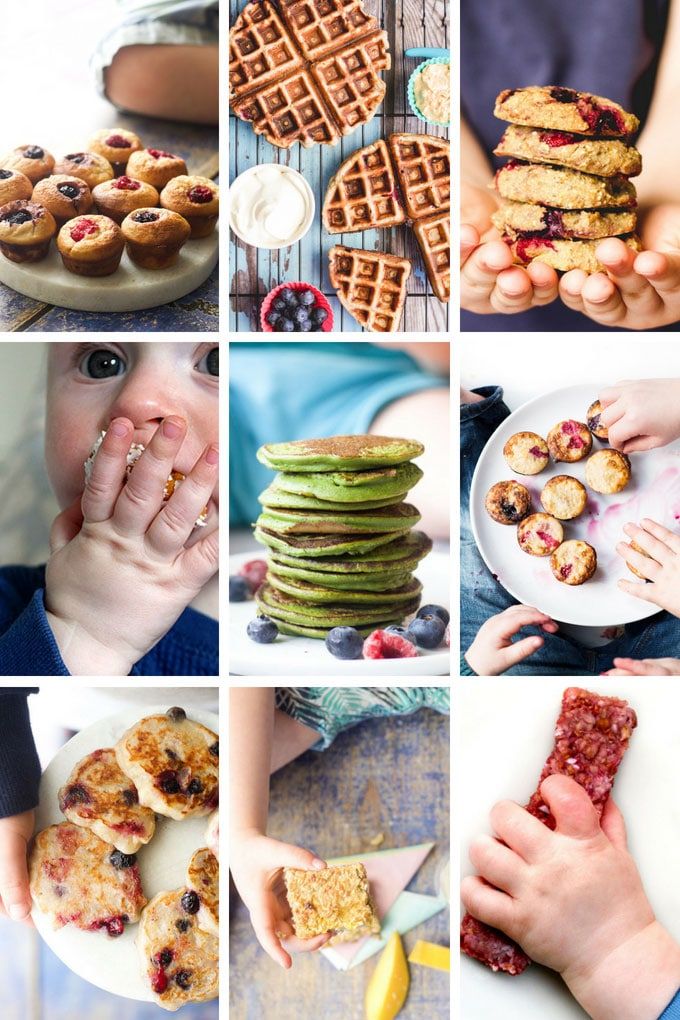 Remove from oven and let cool.
Remove from oven and let cool. Share on Pinterest
5. Banana, kiwi and banana puree
Start end: 10 minutes
Serve: 1 cup
Ingredients:
peeled
2 kiwis, peeled
Instructions:
The fun of shopping at a farmer's market is the endless possibilities of what you can create with your vehicle.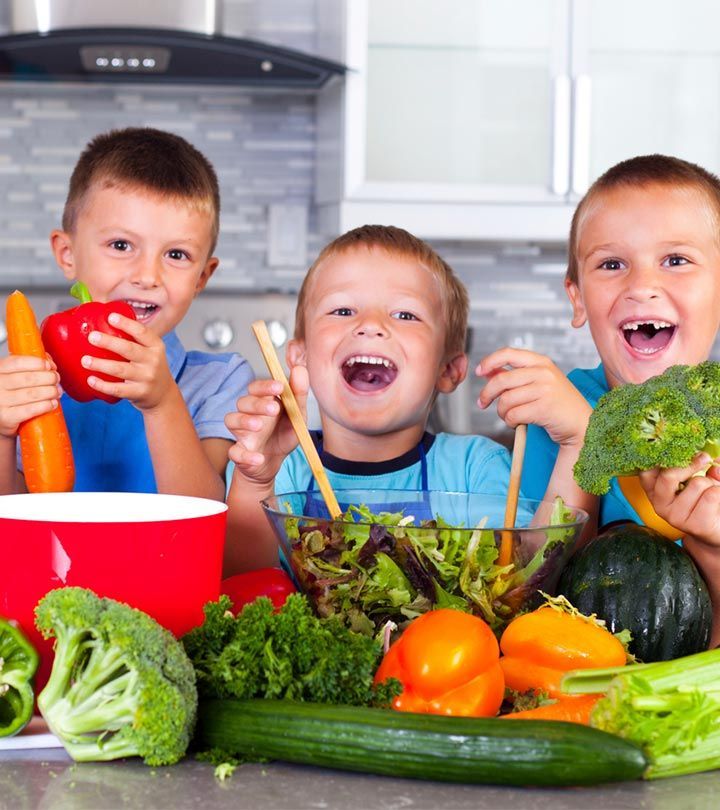 If you've taken care of food waste in the past, you can rest easy knowing that you're not only making the most of the product, but also feeding your baby the best he or she can eat. And if you need another reason, keep in mind that making your own baby food (even a few meals a week) is environmentally friendly and supports local businesses. Everyone wins! If you're worried about whether certain foods are safe for your baby, it's best to leave them until you're sure. Play with ingredients. If you know your child loves apples but doesn't like pears, change the recipe! Accordingly, always ask your doctor if you are not sure at what age you can safely eat solid foods and new foods. If your baby shows signs of intolerance or an allergic reaction, you should immediately consult a doctor.
If you've taken care of food waste in the past, you can rest easy knowing that you're not only making the most of the product, but also feeding your baby the best he or she can eat. And if you need another reason, keep in mind that making your own baby food (even a few meals a week) is environmentally friendly and supports local businesses. Everyone wins! If you're worried about whether certain foods are safe for your baby, it's best to leave them until you're sure. Play with ingredients. If you know your child loves apples but doesn't like pears, change the recipe! Accordingly, always ask your doctor if you are not sure at what age you can safely eat solid foods and new foods. If your baby shows signs of intolerance or an allergic reaction, you should immediately consult a doctor.
I'd love to know what fun recipes you make at home. What are your favorite finds in the baby food market?
Share on Pinterest
Kaylee is a Registered Dietitian, Live Table food blogger, writer and recipe developer with a passion for making healthy living fun and accessible to everyone.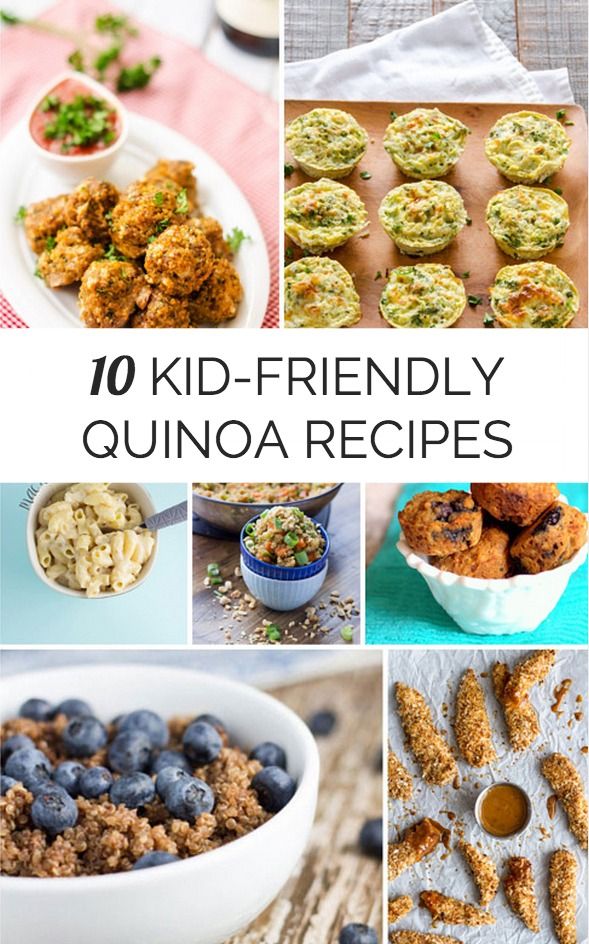 He believes in a non-dietary approach to healthy eating and is committed to helping clients develop a positive relationship with food. When not in the kitchen, Kaylee can be found hanging out with his wife and three British spaniels.
He believes in a non-dietary approach to healthy eating and is committed to helping clients develop a positive relationship with food. When not in the kitchen, Kaylee can be found hanging out with his wife and three British spaniels.
How to choose the right quality baby food. What you need to pay attention to
Dear consumers, the right choice of baby food is very important, because it is the foundation for the future health of the child. We bring to your attention this article, and we hope that you will be careful about the choice of baby food, and your children will be healthy and cheerful.
How to choose the right quality baby food. What you need to pay attention to
Properly selected baby food will not only strengthen the child's immunity, but also energize him, make him active and inquisitive.
Of course, breast milk is the most valuable product for the baby, but most often, when it is not enough, the baby has to be fed with milk formula.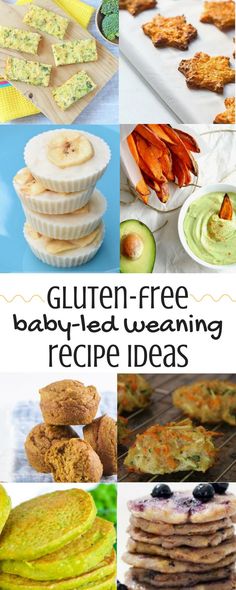 There are many baby formulas, a few tips on how to choose food for an infant:
There are many baby formulas, a few tips on how to choose food for an infant:
- if you use canned food, get acquainted with the composition of the products - study the composition and list of components in detail. Some manufacturers make 100% one-component purees such as fruit or vegetable purees, and some fruit/vegetable/meat purees are diluted with a little water. This is necessary to dilute thick foods;
- for more complex foods such as meat, fish, cheese - check that these ingredients are listed as a percentage, so you can control how much of a food your child has taken;
- starch or rice flour? They are sometimes needed to get the right consistency. For example, if it is rice pudding, or an adapted milk mixture with rice, buckwheat or oatmeal, then it should not be starch in this product, but rice flour;
- dietary supplements in baby food are restricted. Vitamin C is often added to make up for losses in processing, it acts as an antioxidant to prevent fatty plaques, which is why fruit and vegetable purees turn dark in color.
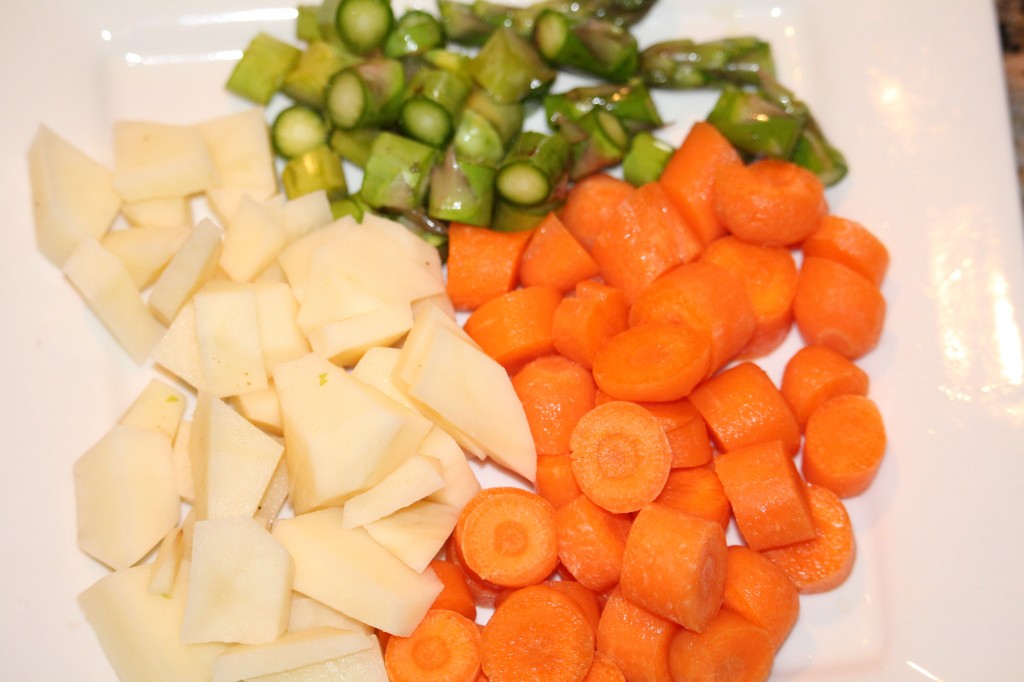 In no case should preservatives, dyes be present in baby food;
In no case should preservatives, dyes be present in baby food; - sugar and salt? Check the list of ingredients for the composition of sugar and salt, for 100 g of baby product it should not exceed 100 mg;
- first, second and dessert? Does your child need dessert? Dietitians claim that desserts adapted for babies are not produced. Mix fruit puree with low-fat yogurt, with cottage cheese obtained in the children's kitchen, this will be the best dessert for your baby;
- Do not add sugar, artificial sweeteners, honey or salt to baby food. After 6 months, if you decide to let your baby taste the juice, choose 100% natural, unsweetened, pasteurized juice and offer the baby as part of the meal. Do not teach your baby to drink full-fledged food with juice. It's unhealthy!
Requirements for baby food labeling (Law of Ukraine "On baby food". Article 11).
1. Labeling of baby food is carried out in the state language in accordance with the Law of Ukraine "On Safety and Quality of Food Products" and the Law of Ukraine "On Baby Food".
2. On the label, next to the name of the product, the age of the child from which the use of this product is allowed is indicated.
3. The information on the composition of baby food provides an exhaustive list of all ingredients in order of preference for their mass fraction in the composition of the product, including food additives and flavors used in its production, with the exception of added vitamins and minerals, which must be isolated in separate groups with corresponding names and can be listed without regard to order depending on the content.
4. Information on calorie content in kilocalories or kilojoules and nutritional value is applied to the label of baby food, indicating the quantitative content of proteins, fats, carbohydrates, vitamins and minerals in established units of measurement per 100 grams or 100 milliliters of the ready-to-eat product.
5. The end date for consumption of baby food must contain the day, month, and year in an uncoded numeric value. For products with a shelf life of more than three months, it is enough to indicate the month and year by which the product can be consumed.
6. The label of baby food indicates the storage conditions necessary to ensure its safety and quality, including after opening the package (container).
7. The label of baby food, which requires additional preparation for use, contains information about the method of preparation and / or use of the product and the recommended amount of the product per feeding, taking into account the age of the child.
8. The label of infant formula and infant formula for further feeding must contain a warning about the unconditional benefits of breastfeeding.
9. Functional baby food labels indicate special dietary needs, functional conditions and/or diseases for which the use of such products is recommended.
10. The label of baby food intended for infants indicates the need for a preliminary (before consumption) consultation with a doctor.







